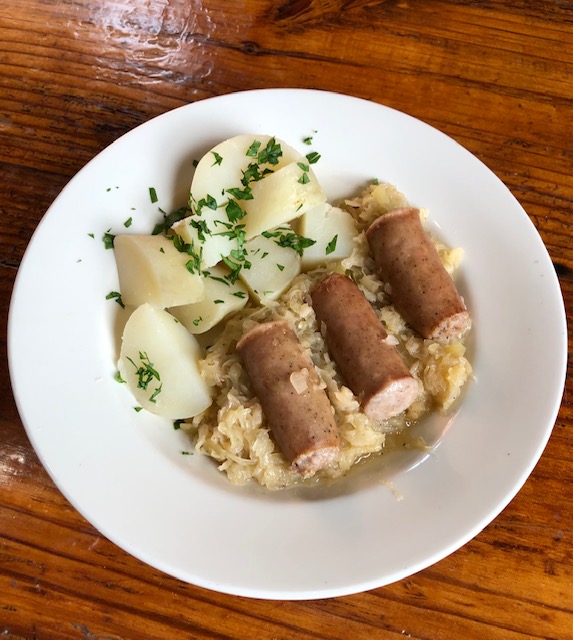Red and Black Chili
The recipe feeds six to eight heavy eaters – but leftovers are appreciated. Serve in shallow soup bowls with some rice at the bottom of the bowl, if desired. And grated cheddar or jack cheese can be sprinkled on top, along with a dollop of sour cream.
2 strips uncooked bacon, finely minced
1 medium-large onion, coarsely diced
2 cloves garlic, minced
2 pounds ground beef (preferably 85% lean)
2 bay leaves
4 tablespoons chili powder
1 teaspoon paprika
3/4 teaspoon oregano
3/4 teaspoon ground cumin
1/2 teaspoon ground allspice
1/4 teaspoon black pepper
1/4 teaspoon (or more) crushed hot pepper
2 teaspoons salt, plus more to taste
1 (28-ounce) can diced tomato, including the juice
2 (14-ounce) cans black beans, rinsed and drained
1 cup water
1 small red bell pepper, medium diced
Cooked rice (white or brown) for serving, optional
Grated cheddar or jack cheese and/or sour cream for serving,
optional
In large pot, fry minced bacon with the onions, stirring frequently, until onions start to turn golden. Add garlic and meat. Cook until raw color leaves the meat, breaking the meat up as it cooks.
Add bay leaves, dry spices and herbs, plus 2 teaspoons of salt. Fry gently 2 minutes, stirring frequently. Add tomatoes, and simmer about 10 minutes, stirring occasionally.
Add the beans and water. Simmer 5 minutes. Add diced bell pepper. Simmer 10 minutes. Taste and add salt as needed. Add a little water to make a medium-thick consistency, if desired. Remove bay leaves at the end of cooking.
Let sit 10 minutes, stir, and taste and adjust salt if needed.
Chili is richer in flavor if made ahead and reheated.












